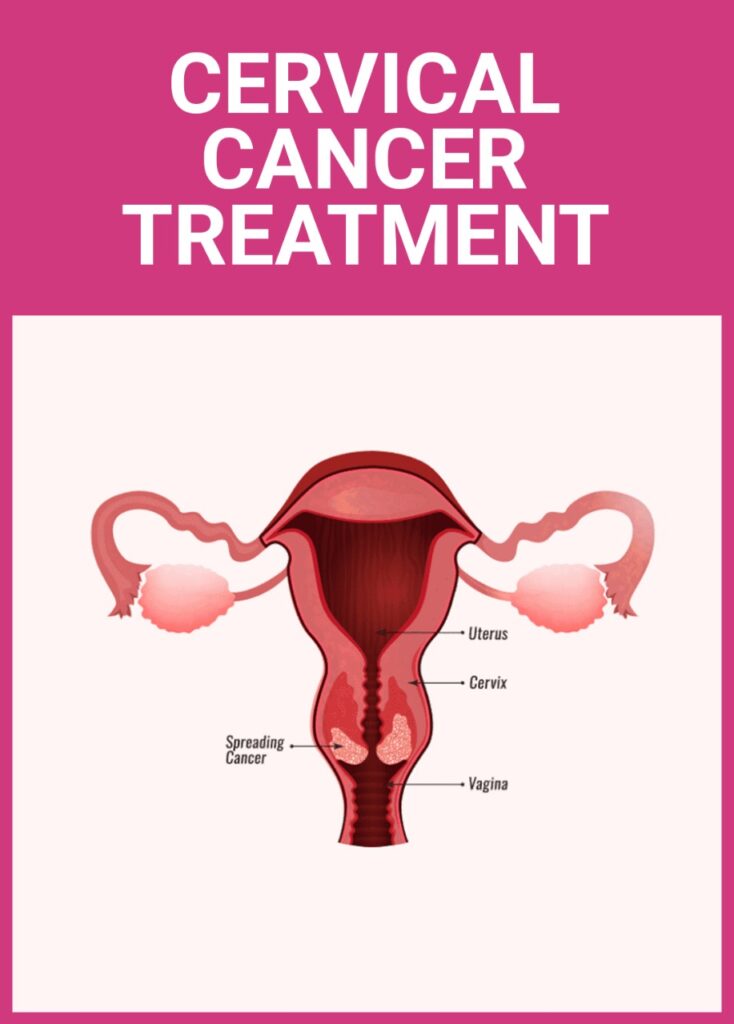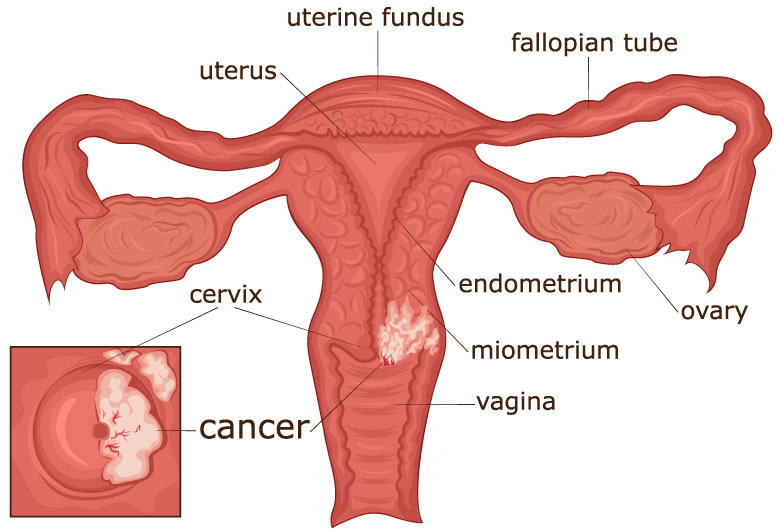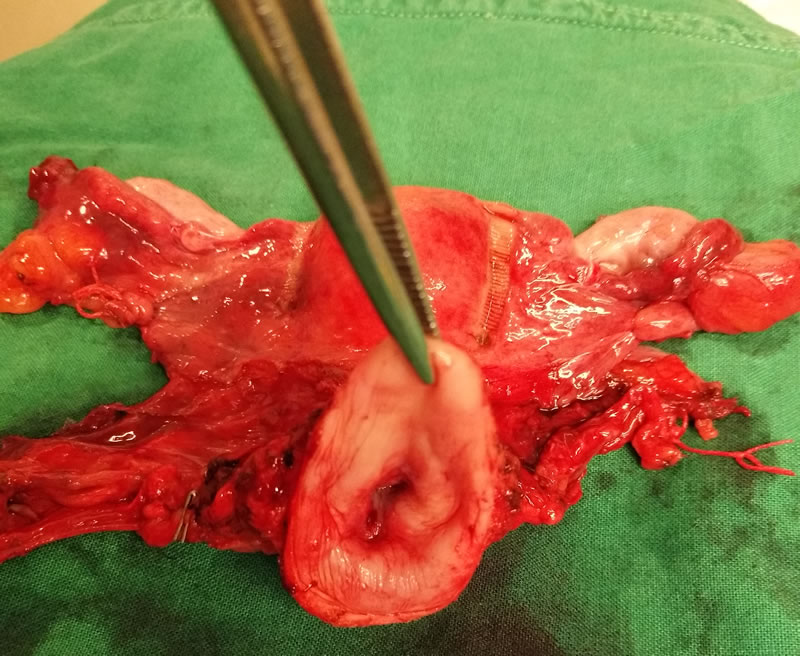
What is Cervical Cancer?

What is Cervical Cancer?
Cancer of cervix or uterus mouth is the second most common cancer in females after breast cancer and it usually affects women in their late 30s and 40s and also in women after menopause.
We can understand the magnitude of the problem by the fact that 1/4th of all cervical cancer cases of the world occur in Indian women and also India accounts for 1/4 of all cervical cancer deaths of the world.
It is a huge public health problem in our country.
What are the risk factors for cervical cancer?
A risk factor is anything that increases your chance of getting a disease such as cancer. Different cancers have different risk factors.
Risk factors for cervical cancer are:
- HPV (Human Papilloma Virus) infection which is a sexually transmitted infection is the most important risk factor for cervical cancer.
- Becoming sexually active at a young age (especially younger than 18 years old)
- Having many sexual partners
- Having one partner who is considered high risk (someone with HPV infection or who has many sexual partners)
- Human immunodeficiency virus (HIV), the virus that causes AIDS, weakens the immune system and puts people at higher risk for HPV infections.
- Having multiple full-term pregnancies
- Young age at first full-term pregnancy
- Poor socio-economic status
- Smoking
How long does it take for cervical cancer to develop?
- Human papillomavirus (HPV), a common sexually transmitted infection, is the primary underlying cause of cervical cancer.
- Although HPV cannot be treated, in the majority of women, the infection clears itself spontaneously. In a small percent of women, however, HPV infection persists and leads to precancerous lesions, called dysplasia. Immunocompromised women may be at particularly high risk of persistent infection.
- Low-grade dysplasia usually is temporary and disappears over time. Some cases, however, progress to high-grade dysplasia.
- Women with high-grade dysplasia are at risk of developing invasive cervical cancer; this generally occurs slowly, over a period of several years.
- Progression to detectable, precancerous lesions can take as long as 10 years. One study estimates that the risk of progression from moderate to severe precancerous lesions is 32 percent within 10 years.
- Women aged 35 years or older with identified moderate or severe precancerous lesions are at higher risk for developing cervical cancer as compared to women less than 35 years of age.

Signs and symptoms of cervical cancer
Symptoms and Complaints
- Uterine cervix cancer presents most often with abnormal vaginal discharge, postcoital bleeding, or nonmenstrual vaginal bleeding or spotting. Early cervical cancer may not produce any symptoms and may be diagnosed at the time of routine screening for cervical cancer.
- As the cancer grows in size, it might elicit local pelvic pain or difficulty or pain during urination or defecation.
If disease were to spread to abdominal lymph nodes, the woman may have back pain or unilateral leg swelling.
Signs of cervical cancer (What the doctor sees on examination)
There may a visible growth on the cervix on a speculum examination in the OPD. The growth may be extending to involve the vagina. There may be palpable neck or groin lymph nodes in case of advanced disease.
What is cervical cancer pain like?
- Locally advanced cervical cancer, when the cervical cancer has infiltrated the surrounding supporting tissues of the uterus and cervix, can give rise to lower abdominal pain.
- If the cervical cancer has infiltrated the urinary bladder or urethra, it may cause pain during urination, and if it has infiltrated the rectum or anal canal, it may cause pain during defecation.
- If the disease has involved the abdominal lymph nodes, there may be back pain.
- Whenever a woman with symptoms like abnormal vaginal bleeding or discharge which could be suggestive of a possible cervical cancer presents, a complete pelvic examination needs to be performed by a Gynec Oncosurgeon in the Outpatient department. This pelvic examination is painless and does not cause much discomfort to the patient.
- If there is any suspicious lesion or growth on the cervix, a small biopsy from the lesion is taken and again this procedure is painless and can be performed in the OPD itself.
- If the diagnosis of cervical cancer is confirmed on biopsy, an imaging like CT scan or MRI scan depending upon the clinical examination findings needs to done for further treatment planning.

Treatment options of cervical cancer
- Treatment of cervical cancer depends on the stage in which it is diagnosed. Stage is confirmed based on the pelvic examination findings by a Gynec Oncosurgeon and on imaging (CT / MRI scan) findings.
- Cervical cancer when diagnosed in stage 1 is potentially curable with the surgery alone. The standard surgical procedure is radical abdominal hysterectomy with pelvic lymph nodal dissection. This surgery is not just removal of the uterus and cervix but is a more radical procedure where all the supporting tissues surrounding the uterus and cervix are removed from the pelvis.
- Cervical cancer when diagnosed in more advanced stages of the disease requires Radiation therapy and Chemotherapy. As the stage of the disease at the time of the diagnosis advances and the cancer is diagnosed late, the treatment protocols become more complicated requiring combination of radiation and chemotherapy and also the chances of cure decreases.
Hence it is very important that cervical cancer is picked up early and is treated appropriately.
Can cervical cancer be cured completely?
- Treatment and the cure rate of cervical cancer depend on the stage in which it is diagnosed. Stage is confirmed based on the pelvic examination findings by an Gynec Oncosurgeon and on imaging (CT / MRI scan) findings.
- Cervical cancer when diagnosed in stage 1 is potentially curable with the surgery alone. The standard surgical procedure is radical abdominal hysterectomy with pelvic lymph nodal dissection. This surgery is not just removal of the uterus and cervix but is a more radical procedure where all the supporting tissues surrounding the uterus and cervix are removed from the pelvis.
- Cervical cancer when diagnosed in more advanced stages of the disease, requires Radiation therapy and Chemotherapy. As the stage of the disease at the time of the diagnosis advances and the cancer is diagnosed late, the treatment protocols become more complicated requiring combination of radiation and chemotherapy and also the chances of cure decreases.
Hence it is very important that cervical cancer is picked up early and is treated appropriately.

Is Stage 4 cervical cancer curable?
Patients diagnosed with stage IV cervical cancer can be broadly divided into two groups.
- Patients with disease that is locally confined, but involves adjacent organs in the pelvis, such as the rectum and bladder, have localized stage IVA cervical cancer.
- Patients that have disease that has spread to distant organs, most commonly the bones, lungs or liver, and have metastatic stage IVB cervical cancer.
Cervical cancer diagnosed in this stage is often difficult to treat, however a small minority of patients are cured of disease. Management of patients with metastatic stage IVB disease is aimed at control of symptoms and pain.
Treatment of Localized Stage IVA Cervical Cancer
- Stage IVA cervical cancer is currently best managed by a combination of radiation therapy and chemotherapy. Radiation therapy is treatment with high energy x-rays that have the ability to kill cancer cells.
- Radiation therapy can be administered by a machine that aims x-rays at the body (external beam radiation) and by placing small capsules of radioactive material directly near the cervix (internal radiation or Brachytherapy). Most patients will receive both kinds of radiation therapy during their course of treatment. External beam radiation therapy for cervical cancer is administered on an outpatient basis for approximately 4 to 6 weeks.

Treatment of Metastatic Stage IVB Cervical Cancer
- Cervical cancer that has spread to distant organs and bones is difficult to treat and the main goal of treatment is to reduce symptoms and prolong survival. Some patients are offered treatment with chemotherapy for the purpose of prolonging their duration of survival and alleviating symptoms from progressive cancer. Other patients are managed with efforts to reduce pain or bleeding, including local radiation therapy to affected parts of the body.
- Other highly specialized forms of therapy like targeted therapy i.e. Bevacizumab and Immunotherapy can be given on case to case basis.
Can Cervical Cancer be prevented?
The two most important steps towards prevention of cervical cancer are
- Vaccination
- Screening for cervical cancer precancers
Vaccination
- Vaccines help protect children and young adults against certain infection with HPV types most commonly linked to cervical cancer, as well as some types that can cause anal and genital warts.
- These vaccines only work to prevent HPV infection − they will not treat an infection that is already there. That is why, to be most effective, the HPV vaccines should be given before a person becomes exposed to HPV (such as through sexual activity).
- The ideal age recommended to receive vaccination is between 9 to 12 years.
- These vaccines help prevent pre-cancers and cancers of the cervix.
Screening for cervical cancer precancers
- Screening is testing asymptomatic women with certain tests so as to detect cervical precancers before they can turn into invasive cancer.
- The Pap smear and the human papillomavirus (HPV) test are specific tests used during screening for cervical cancer. Both tests can be performed together in the Outpatient department and do not cause any discomfort.
- Timely detection and treatment of precancer lesions through screening prevents development of cervical cancer.
